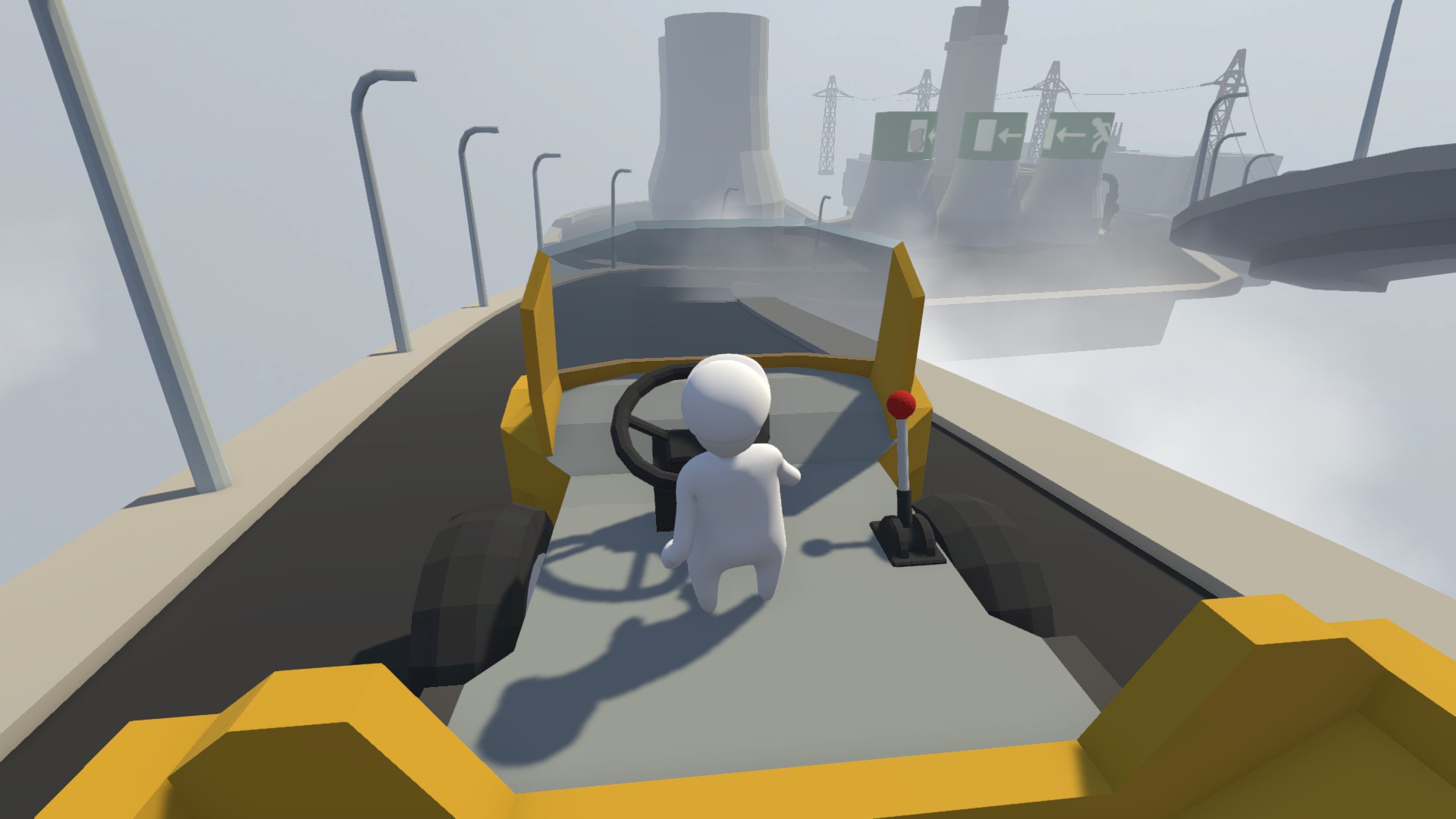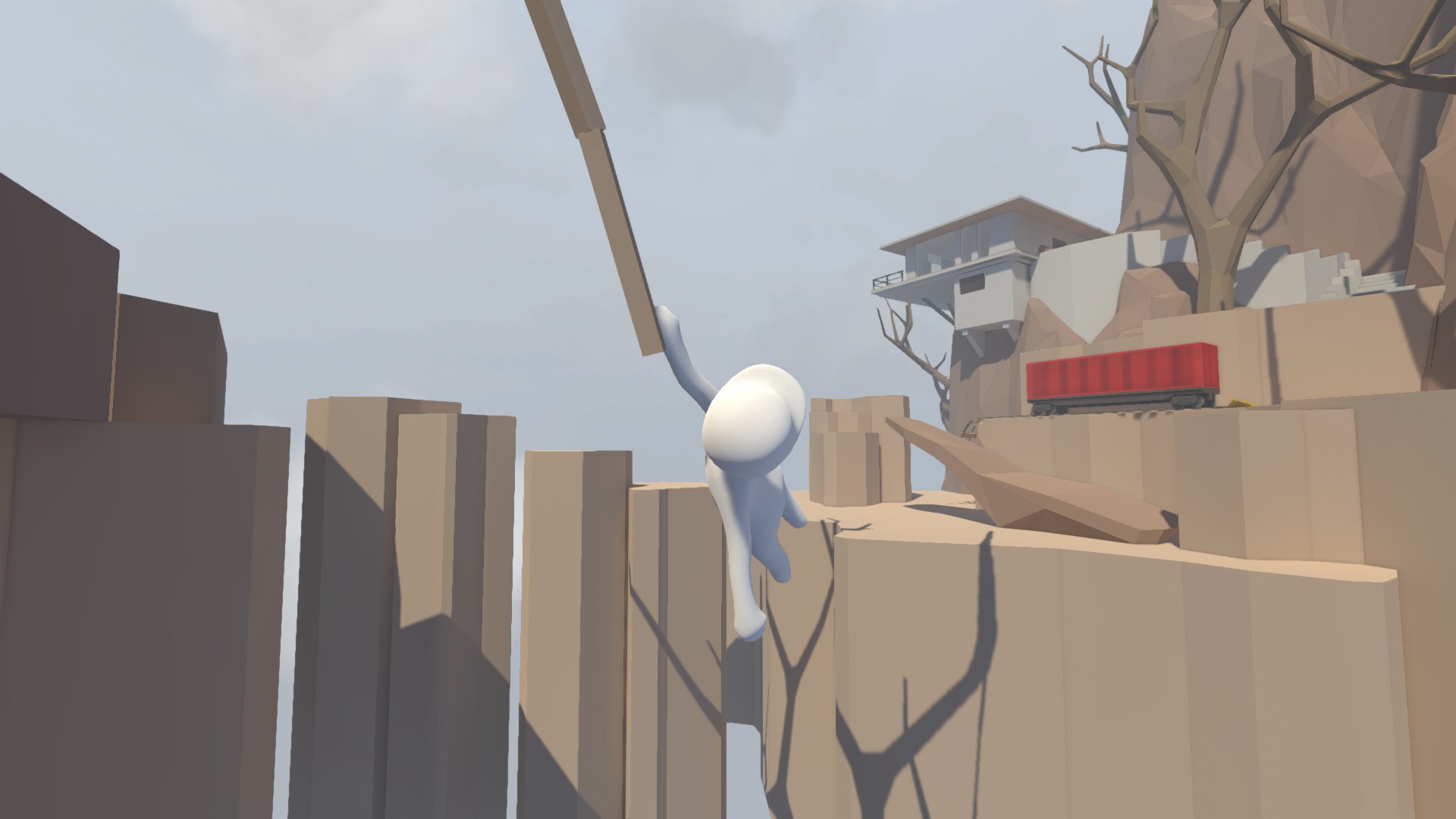Search
[{{{type}}}] {{{reason}}}
{{/data.error.root_cause}}{{{_source.title}}} {{#_source.showPrice}} {{{_source.displayPrice}}} {{/_source.showPrice}}
{{#_source.showLink}} {{/_source.showLink}} {{#_source.showDate}}{{{_source.displayDate}}}
{{/_source.showDate}}{{{_source.description}}}
{{#_source.additionalInfo}}{{#_source.additionalFields}} {{#title}} {{{label}}}: {{{title}}} {{/title}} {{/_source.additionalFields}}
{{/_source.additionalInfo}}Human: Fall Flat (PC)

Human: Fall Flat
Developed By: No Brakes Games
Published By: Curve Digital
Released: July 22, 2016
Available On: Linux, macOS, PS4, Windows, Xbox One
Genre: Puzzle
ESRB Rating: E
Number of Players: 1-2 Offline
Price: $14.99
(Humble Store Link)
Thanks to Curve Digital for the review key!
Falling dreams: most everyone has experienced at least one in their life. Contrary to the old myth, you won’t die if you hit the ground before waking. Instead, you might find yourself suspiciously boneless and presented with a series of physics-based puzzles. Don’t worry; it’s better than it sounds.
Human: Fall Flat gives you control of Bob, a normal human construction worker with recurring dreams of falling. When he lands, he’s met with exotic landscapes full of open-ended puzzles to traverse, with his ultimate goal to slip out the exit door and continue his fall. As a regular guy, albeit looking and moving like a semi-featureless blob of clay, Bob’s arsenal includes two feet that can walk and jump, two hands that can firmly grasp any object, and a head that can apply the previous two to work out not-so-obvious solutions. He’ll carry boxes, climb mountains, operate motor vehicles, swing on vines and lampposts, and manipulate electricity in pursuit of the next dream.
The puzzles themselves usually revolve around a few basic tasks, such as holding down a pressure plate or crossing a large gap. Outside of the first few tutorial levels, however, you’ll rarely come across the same setup twice. Even if you do, there’s often multiple ways around the problem: a clever thinker can work out ways to manipulate objects or Bob’s movement to find shortcuts and skip whole puzzles – and occasionally whole levels. While the game presents you with an intended path with the occasional side route, you’re free to go wherever and complete the game however you can, with the only obstacles being your imagination and the limits of the physics engine. This offers a good amount of replay value as well – and the in-game achievements can point you to solutions you wouldn’t have thought of otherwise, or just goof around in fun ways.

Strong Points: Clever, open-ended physics puzzles; great music
Weak Points: Some puzzles are dull and/or repetitive; the purposefully-loose controls are occasionally frustrating
Moral Warnings: A single instance of light toilet humor
The controls are wobbly and strange, but by design: Bob is part of the physics engine as well, after all, and leading his jelly-like form around is half the fun. The keyboard/mouse and controller work similarly: moving and jumping work as you’d expect with WASD and space/left stick and A, looking around with the mouse/right stick, and using Bob’s hands with the left and right mouse buttons/triggers. With the latter, Bob will stick his arms out and grab onto anything he touches until you command him to let go; he won’t accidentally drop anything, no matter what you put him through. While seemingly simple, you can make Bob do quite a lot by moving his hands and shifting his body weight – and watching his boneless dream body sway and bounce around is rather amusing as well. Once you get the hang of it, most everything feels natural; combined with the freedom the puzzles offer, it becomes a blast to play.
While the majority of the game is enjoyable to run through a couple times, it suffers from a sort of creativity fatigue near the end. The second-to-last level, Power Plant, consists almost entirely of the same “power an object with batteries and wires” puzzle, which is mostly just busy work and boring back-and-forth movement on flat terrain. The freshly-added final level, Aztec, suffers from the opposite problem: it’s busy and convoluted to the point that exploiting your way around the puzzles is often easier than actually completing them. A few of the Aztec achievements are picky at best and broken at worst, as well as occurring more than halfway through and requiring a level restart on failure due to the game’s checkpoint system.
On a more general level, while trying to get Bob around is half the game, it’s simple frustration when you know a puzzle’s solution and repeatedly can’t maneuver in the right way. It’s one thing to try new things and tweak your failures; it’s another entirely when an intended path is finicky. For example, trying to operate a rowboat is an entertaining kind of annoying that’s satisfying when you work it out; spending a few minutes trying to hook a floating-away raft to a post, not so much. It’s an uncommon problem, to be fair, and perhaps part and parcel of the physics-based gameplay, but fighting the controls can get old quickly.

Higher is better
(10/10 is perfect)
Game Score - 85%
Gameplay - 16/20
Graphics - 8/10
Sound - 9/10
Stability - 5/5
Controls - 4.5/5
Morality Score - 98%
Violence - 10/10
Language - 10/10
Sexual Content - 10/10
Occult/Supernatural - 10/10
Cultural/Moral/Ethical - 9/10
The controls are wobbly and strange, but by design: Bob is part of the physics engine as well, after all, and leading his jelly-like form around is half the fun. The keyboard/mouse and controller work similarly: moving and jumping work as you’d expect with WASD and space/left stick and A, looking around with the mouse/right stick, and using Bob’s hands with the left and right mouse buttons/triggers. With the latter, Bob will stick his arms out and grab onto anything he touches until you command him to let go; he won’t accidentally drop anything, no matter what you put him through. While seemingly simple, you can make Bob do quite a lot by moving his hands and shifting his body weight – and watching his boneless dream body sway and bounce around is rather amusing as well. Once you get the hang of it, most everything feels natural; combined with the freedom the puzzles offer, it becomes a blast to play.
While the majority of the game is enjoyable to run through a couple times, it suffers from a sort of creativity fatigue near the end. The second-to-last level, Power Plant, consists almost entirely of the same “power an object with batteries and wires” puzzle, which is mostly just busy work and boring back-and-forth movement on flat terrain. The freshly-added final level, Aztec, suffers from the opposite problem: it’s busy and convoluted to the point that exploiting your way around the puzzles is often easier than actually completing them. A few of the Aztec achievements are picky at best and broken at worst, as well as occurring more than halfway through and requiring a level restart on failure due to the game’s checkpoint system.
On a more general level, while trying to get Bob around is half the game, it’s simple frustration when you know a puzzle’s solution and repeatedly can’t maneuver in the right way. It’s one thing to try new things and tweak your failures; it’s another entirely when an intended path is finicky. For example, trying to operate a rowboat is an entertaining kind of annoying that’s satisfying when you work it out; spending a few minutes trying to hook a floating-away raft to a post, not so much. It’s an uncommon problem, to be fair, and perhaps part and parcel of the physics-based gameplay, but fighting the controls can get old quickly.






